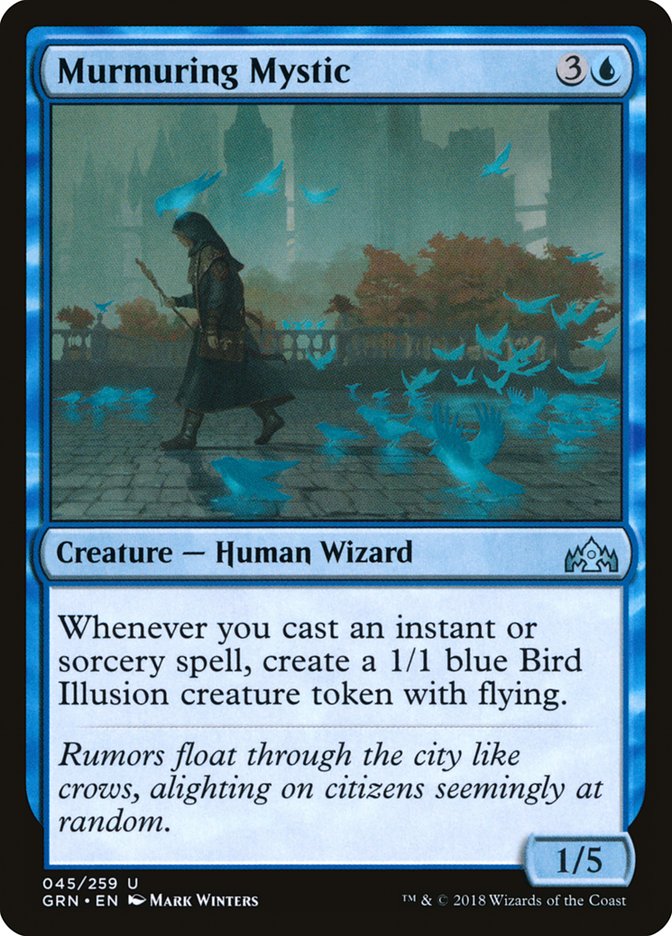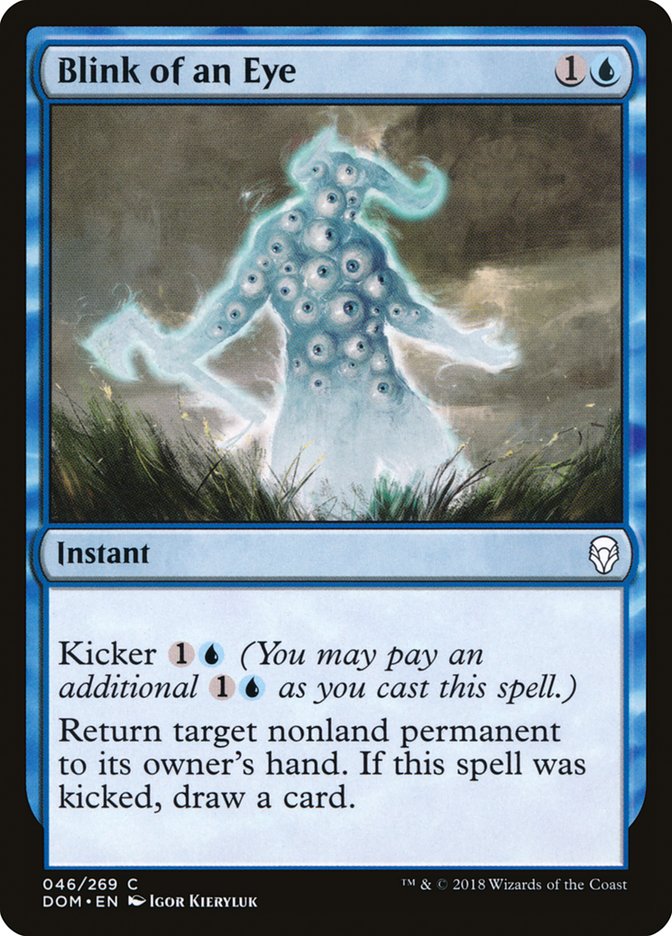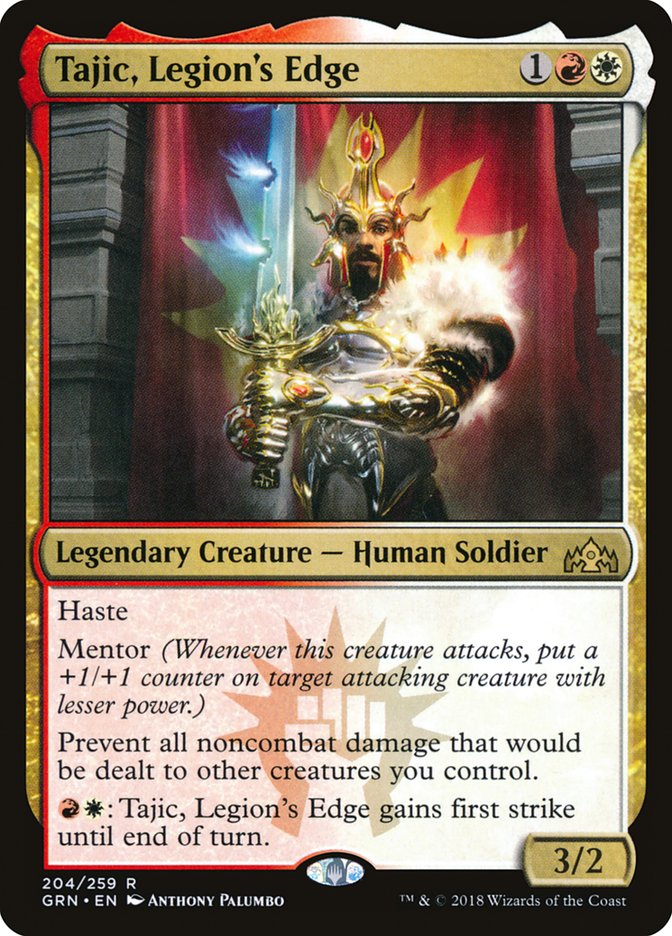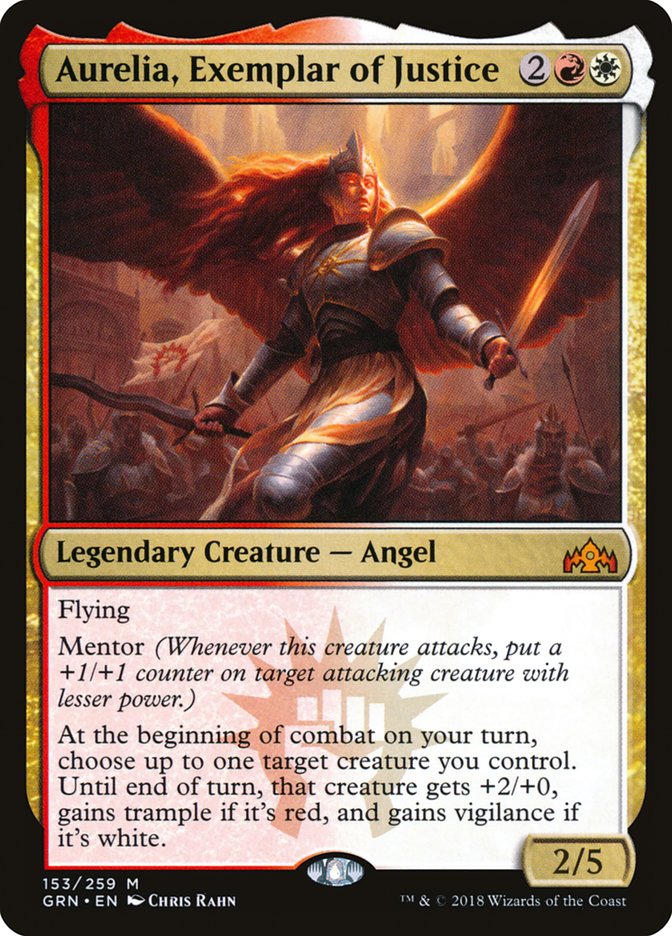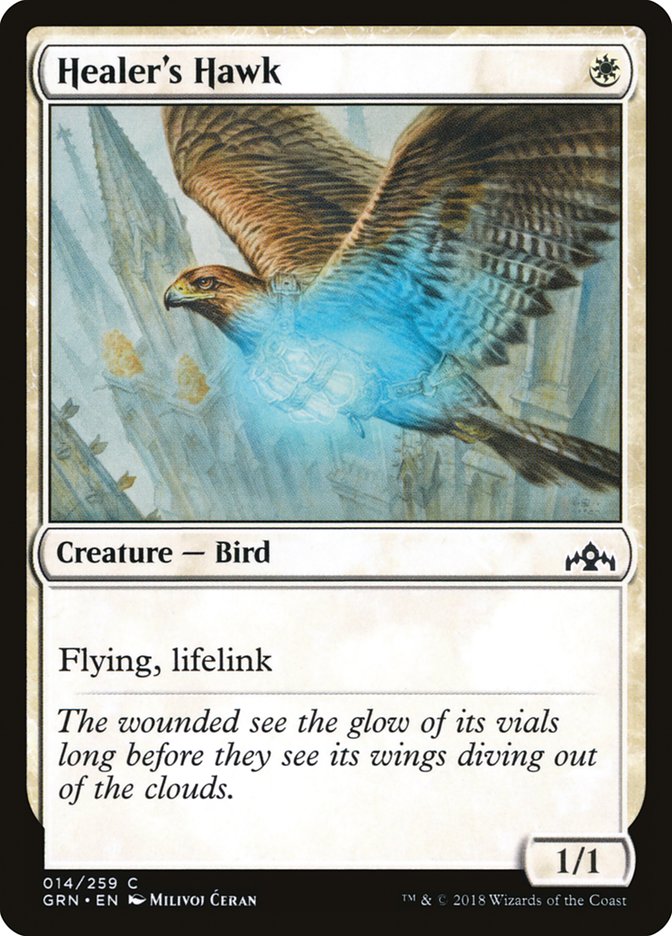In the aftermath of a Pro Tour, there’s a tremendous focus on the immediate
takeaways. What’s the new best deck? How do I beat it? What were the
breakout cards? Where does the format stand now? To be sure, all these
questions are important and deserve attention. Luckily, my talented
coauthors are addressing exactly these points over the course of this week.
This frees me up to take a little bit longer view of the aftermath of Pro
Tour Guilds of Ravnica.
Rather than focus on the now, I want to look at what PT Guilds of Ravnica can teach us about the future – specifically,
deckbuilding in the future. If you let your focus blur a bit, you can spot
some timeless truths obscured amongst the seas of small white creatures,
Drakes, and Doom Whisperers. These truths are going to hold at the next Pro
Tour, and by recognizing them now, you’re putting yourself a step ahead of
your colleagues who are only learning lessons in the context of a given
format.
#1 Identify and Maximize Redundancy
Various white aggro decks and Izzet Drakes were two of the top performing
archetypes at this Pro Tour. Rather than just denoting these as “good”
archetypes-a virtually meaningless distinction, we need to seek to
understand what made these archetypes inherently powerful.
Creatures (11)
Lands (9)
Spells (40)

Creatures (26)
- 4 Adanto Vanguard
- 4 Skymarcher Aspirant
- 4 Snubhorn Sentry
- 4 Benalish Marshal
- 4 Dauntless Bodyguard
- 2 Healer's Hawk
- 4 Venerated Loxodon
Lands (6)
Spells (28)

Both decks identified points of redundancy in the legal card pool and built
their decks to exploit that redundancy. In Pascal Vieren’s case, his deck
was built around maximizing sixteen blue and red cantrips. With an almost
absurd number of these cards present in the format, an engine is formed
that generates velocity unheard of in rotating formats.
While the very existence of Izzet Drakes depends on this wealth of
cantrip-based riches, few builds understood and maximized that fact as well
as Vieren’s. Note the presence of three key one-ofs that have only really
shown up in this particular version.
Murmuring Mystic, Blink of an Eye, and The Mirari Conjecture all bring a
unique angle of attack to this build and will appear in far more games than
you would expect due to the redundant card selection. It’s not enough to
simply identify redundancy. You need to find ways to make that redundancy
deliver the maximum possible dividends, and I would argue that Vieren did
exactly that with some carefully chosen payoffs.
Along the same lines, consider the eighteen (counting Legion’s Landing)
one-drops in Pro Tour Champion Andrew Elenbogen’s Boros Aggro deck. Step
one in the creation of this archetype is recognizing that there are
eighteen white one-drops that are viable inclusions in a Constructed deck –
something that is rarely true at most points in Magic history. Once that
discovery is unearthed, the question is how to maximize these small bodies,
and Andrew’s deck answers the question authoritatively. Every Benalish
Marshall, Snubhorn Sentry, Venerated Loxodon, Conclave Tribunal, Pride of
Conquerors, and Legion’s Landing in this deck is better than the ones that
appeared in early versions of Boros Aggro by virtue of their ability to
leverage the eighteen one-drops present.
These exact same redundancies won’t necessarily appear in the future, but
these decks are blueprints for how to maximize any that do occur. The
lessons here can do just as much to inform our approach when we end up with
a few too many mana elves or three-damage burn spells.
#2 Sometimes the Simplest Answer is Best
Remember what Boros Aggro lists looked like at the beginning of this
format? Here’s one from the Standard StarCityGames.com Columbus Classic a
little over a month ago:
Creatures (22)
- 2 Dauntless Bodyguard
- 4 Knight of Grace
- 3 Lyra Dawnbringer
- 3 Boros Challenger
- 3 Aurelia, Exemplar of Justice
- 4 Swiftblade Vindicator
- 3 Tajic, Legion's Edge
Lands (8)
Spells (30)

I don’t point to this list to demean Patrick’s work in any way. This was a
fantastic result and one of the earliest drafts of a deck that would go on
to roost near the top of a Pro Tour metagame. But it’s very clear how much
the archetype evolved over the course of a month. All the awkward mana
distribution and expensive mana costs were slowly trimmed and honed to the
fine point that Elenbogen used to capture a Pro Tour victory.
When a new set arrives, we as deckbuilders can’t help ourselves. We want to
play with all the new toys. But when you actually look at what a Boros
Aggro deck wants to accomplish – play some small creatures, leverage lords,
and get your opponent dead fast – it seems so obvious that the eighteen
one-drop base white versions would be so much more effective at that
endeavor.
When Ravnica Allegiance rolls around, I want to challenge myself
to recommit to exploring simplicity as carefully as I explore that flashy
new tools like Tajic, Legion’s Edge and Aurelia, Exemplar of Justice. In a
lot of ways, this approach ties in with respecting redundancy. No one was
doing any backflips when Healer’s Hawk was previewed, but its role as
playable one-drop numbers seventeen and eighteen proved to be essential.
The most powerful addition to a deck does not always equal the most
optimal.
#3 A Good Sideboard Plan Equals a New Deck
One pervasive sentiment leading into the Pro Tour was that Izzet Drakes was
a sizeable underdog to Boros Aggro. This interpretation has persisted post
Pro Tour. See the following quote from Ari Lax’s absolutely incredible
article ”
How Every Good Standard Deck Wins and Loses Every Matchup
.”
”
Boros Aggro is very ahead, and solving this matchup is the immediate
key to keeping Drakes at the top of the metagame.”
I hate to nitpick an incredible article, but I think Ari’s assessment was
spot on for the matchup as it existed leading into the Pro Tour. At the Pro Tour, everything changed.
Both Pascal Vieren’s 10-0 list and Yuuya Watanabe’s Top 8 list have
entirely abandoned the quickly-invalidated sideboard Fiery Cannonades,
instead turning to three copies of Entrancing Melody, and in Vieren’s case,
copious mana-efficient spot removal and a sweeper that can answer any size
battlefield in Star of Extinction.
Creatures (11)
Lands (9)
Spells (40)

Creatures (15)
Lands (21)
Spells (24)

The successful Izzet Drakes lists from this event showed up with innovative
sideboards that completely redefined their position in the metagame. In
fact, @JaredLunsford over on Twitter did a little datamining and found that
when Izzet Drakes players who had their lists published by Wizards (i.e.
those with a record of 6-4 or better) faced off against the published Boros
Aggro lists, Izzet Drakes came out ahead 12-7 in matches. Surely not the
largest sample size, but also not what you would expect from a highly
unfavorable matchup.
A sideboard shift like this should be predictable given the quality of
players present at a Pro Tour, but it’s easy to shortcut when doing
metagame assessment. There are a lot of moving pieces to keep track of, and
you must make some assumptions to ever reach a conclusion. But if you were
to conclude that Izzet Drakes should fail at this Pro Tour without
considering potential alterations, you could leave yourself with a
dangerous vulnerability to the archetype when it adapts its way to top
tables.
#4 Magic Online is From the Future
Coming into this tournament,
no dedicated player had any right to be surprised by Boros Aggro
. The MOCS clearly pointed to the deck’s breakout, to the point where Gerry
Thompson suggested on
last week’s GAM Podcast
that players choosing to play Boros Aggro were being almost disrespectful
to their opponent’s preparation. And yet, here we are.
In much the same way that Magic Online announced the strength of Zombies
prior to Pro Tour Amonkhet and Ramunap Red prior to Pro Tour Hour of Devastation, here it heralded the arrival of the small
white creatures. This begs the question, why did players fail to answer the
threat yet again?
The truth is, I don’t have an authoritative answer to offer. I think Boros
Aggro is inherently beatable, and in fact, several players did exactly
that, including Gerry and Efro, who worked together on Mono-Red Aggro lists
they both had high praise for.
Played mono red to a 6-4 finish at #PTGRN.
I not only think it’s the best deck right now, but it’s by
a margin. We needed to run better in draft to mop up the white decks we
aimed to prey on, but wasn’t meant to be (my record in testing vs
white aggro was 22-0, 3-0 PT, DW 3-0 PT)— eric
froehlich (@efropoker) November
11, 2018
Let me put forth a few theories as to why Boros Aggro found the success it
did despite clearly wearing the target.
-
Despite its omnipresence in the Top 8, all stats point to Boros
Aggro simply being a good deck, not a dominant one. It’s possible
that variance conspired to alter the narrative of this tournament,
and the Top 8 said far more about who effectively farmed the
Limited rounds. -
Skill sets on the Pro Tour vary dramatically, and while most
everyone would have had awareness of Boros Aggro going into the
tournament, not every player had the skills to appropriately tune a
new decklist in what was essentially five days. This left these
players to default to what they already knew and hope to dodge a
difficult matchup (or convince themselves that the matchup wasn’t
all that bad). -
People didn’t respect Magic Online results. In the aftermath of Pro
Tours Amonkhet and Pro Tour Hour of Devastation
this is somewhat hard to fathom, but I’ve seen Magic players
(including myself) indulge in some serious mental gymnastics to
support the conclusions they want to come to.
If you do reach the conclusion that a portion of the player base will fail
to appropriately adapt at any given Pro Tour, does that mean the best
approach is something in line with what Luis-Scott Vargas did at Pro Tour Guilds of Ravnica?
Creatures (27)
- 4 Ajani's Pridemate
- 4 Adanto Vanguard
- 3 Skymarcher Aspirant
- 4 Benalish Marshal
- 4 Dauntless Bodyguard
- 4 Leonin Vanguard
- 4 Healer's Hawk
Lands (8)
Spells (25)

Designed to garnish an edge in the mirror match by ramping up the lifegain
elements present in the stock Boros Aggro list while maintaining the
aggression present in stock Boros Aggro lists, Luis’s performance at the
Pro Tour certainly suggests the “tune the Magic Online deck to beat the
mirror” approach as an elite one. Upon digging a little deeper though, we
discover Luis’s success didn’t translate to the rest of his team.
As Team CFB we won 81% of our limited and 44% of our
constructed matches. Lul.— Luis Scott-Vargas (@lsv)
November
11, 2018
Even if we’re unable to arrive at a static gameplan for the Magic Online
conundrum based on Pro Tour Guilds of Ravnica, we can still use
the tournament as a lesson. If you’re headed to Cleveland for Pro Tour Ravnica Allegiance, you owe it to yourself to be in tune with
Magic Online. It has simply become the single best prognosticator of Pro
Tour metagames and if you choose to downplay its accuracy, you’re doing
yourself a grave disservice. What you choose to do with this information is
where the difficulty lies.
I hope that taking a moment to consider these lessons has you considering
your next move in this format, as well as future ones. The decision-making
regarding deck selection and optimization at the Pro Tour level is one of
my favorite aspects of Magic. When Magic is at its best, each question
about a format begets others, and sometimes it feels like the pursuit of
answers is circular and endless. To be honest, I wouldn’t want it any other
way.


